Ever wonder why your seams don’t line up at the end of a long line of stitches? Or why your curtain is not straight across at the floor? This tutorial on how to cut fabric straight and square(on grain) will explain it.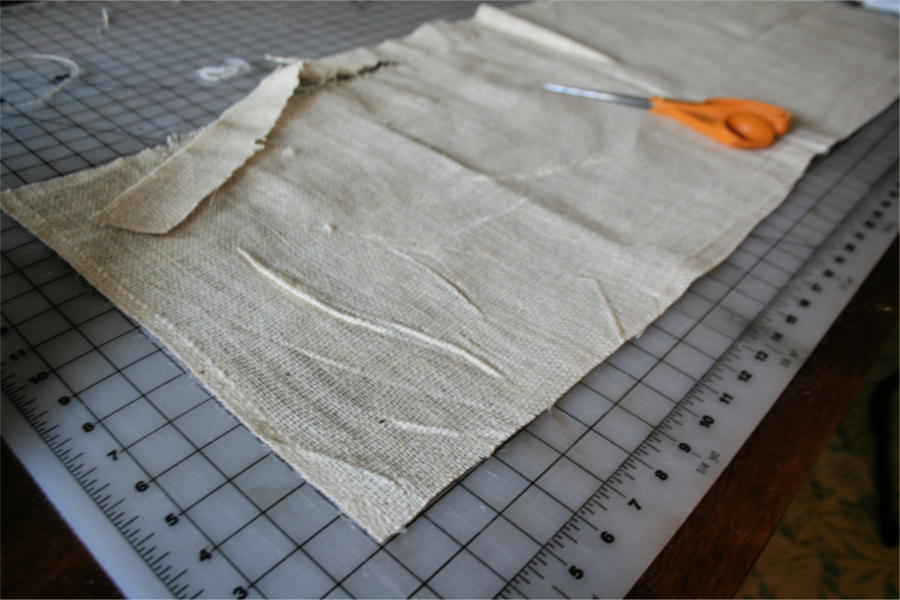
Cutting your fabric straight is probably the most important part of home decor sewing. Your whole project stems from a straight, square cut.
If the fabric is not cut straight your curtain won’t hang straight, your pillow will be wonky, your slipcover will stretch oddly and have a poor fit, your seams won’t line up, etc. etc.
Not to mention fashion sewing. It’s even more important to cut on grain in fashion, so your garments will fit properly. Everyone has had a shirt with a side seam that winds around the front of the body. Or a sleeve that twists around your arm. This is a result of an off grain cut.
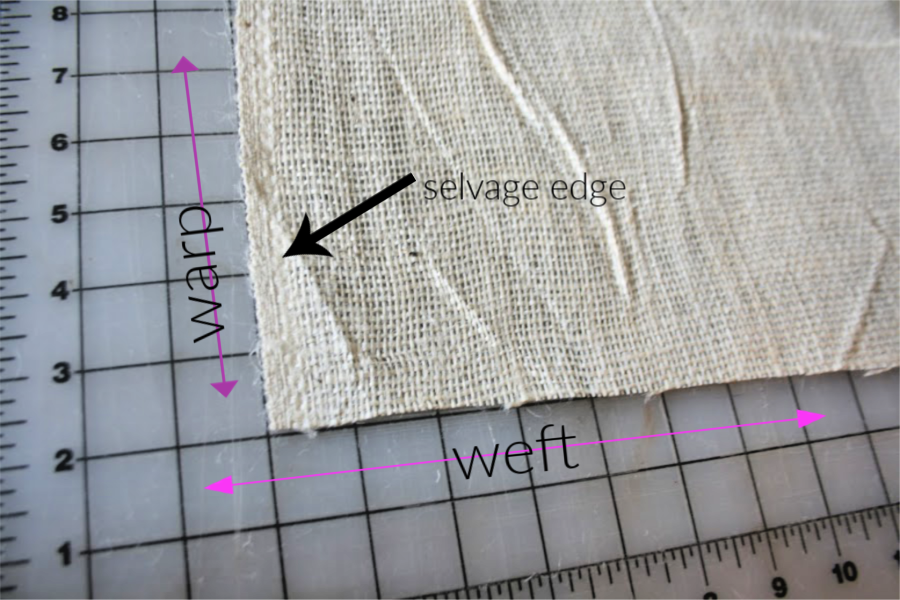
This cutting method applies to fabric that is woven, such as cotton, linen, denim, muslin, velvet, burlap, and on and on. There are many more woven fabrics.
A woven fabric is made on a loom with two or more sets of threads woven together at right angles to each other. The lengthwise grain(thread) is the warp and the crosswise grain(thread) is the weft. The weft runs selvage to selvage.
On a looser weave fabric you can easily see the grains of the fabric. As seen in the burlap pictured above and below.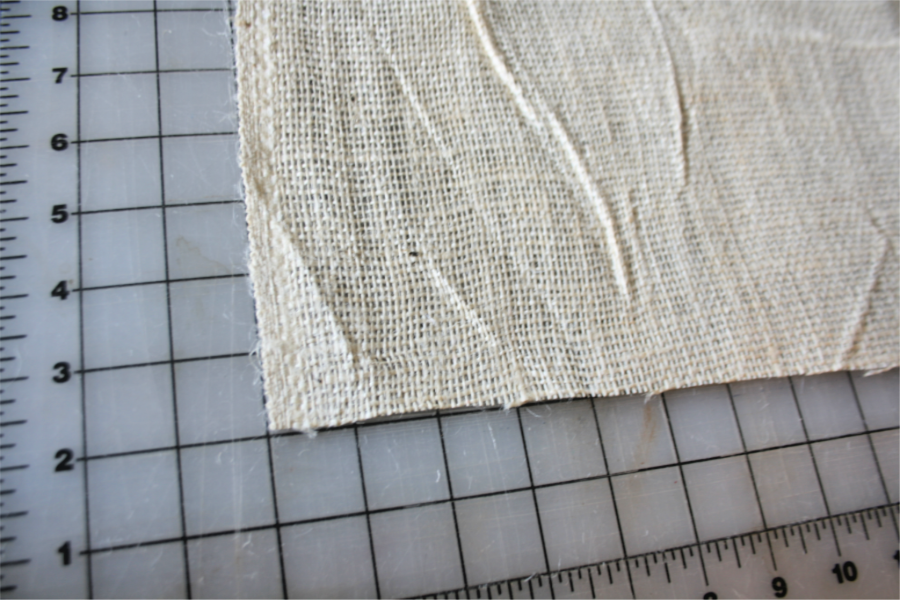
The only way to ensure a straight, square cut is to cut your fabric “on grain”. Meaning, on one single thread or as close to it as possible. Since most fabric you can’t really see a single thread, you have to pull one thread out of the weave, leaving an empty space and therefore a distinct line to follow when cutting. 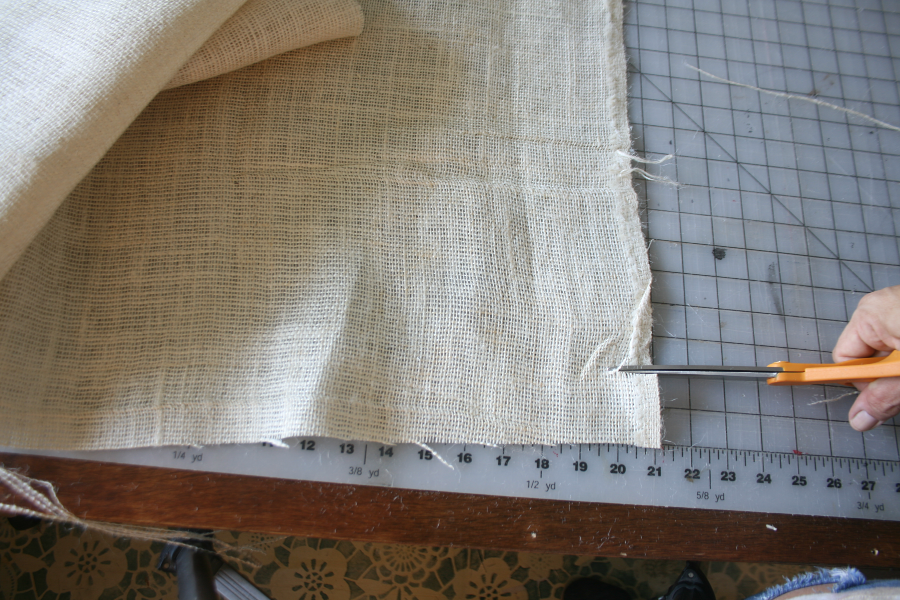 To cut on grain, you first snip through the selvage and into the fabric about 1/4″.
To cut on grain, you first snip through the selvage and into the fabric about 1/4″.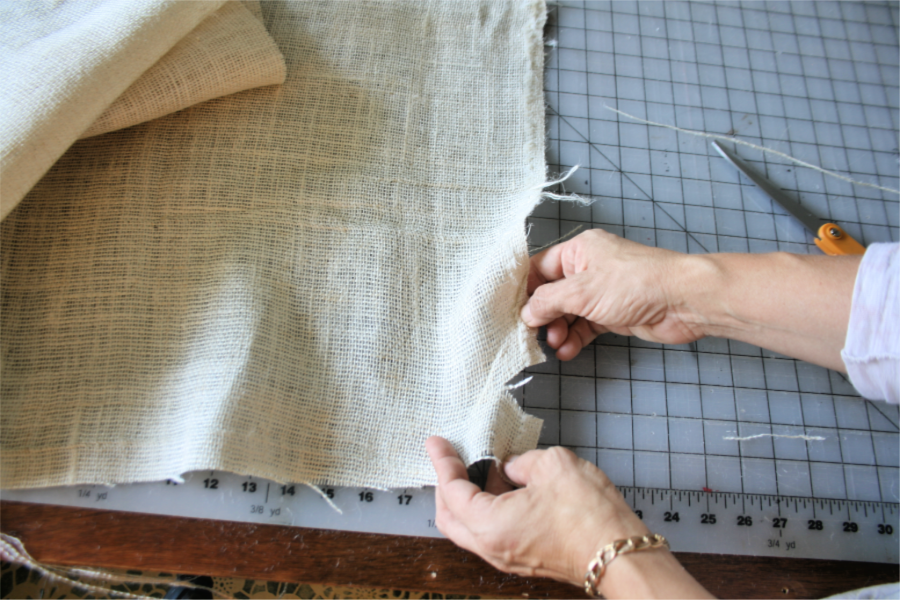 Spread the cut fabric so a thread comes loose. Sometimes(on tighter weaves) you may need to coax a thread loose.
Spread the cut fabric so a thread comes loose. Sometimes(on tighter weaves) you may need to coax a thread loose.
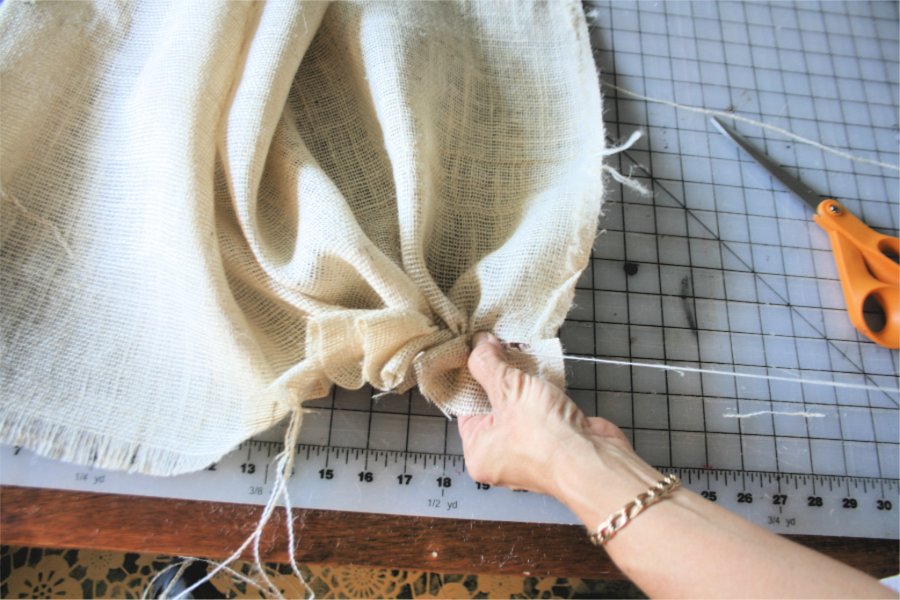 Pull the thread to remove it from the weave. This will gather the fabric in the process and sometimes the thread will break. If your thread breaks, grab the thread right next to the thread you started with. Gather all the way across the width of the fabric to the other selvage until the thread comes out.
Pull the thread to remove it from the weave. This will gather the fabric in the process and sometimes the thread will break. If your thread breaks, grab the thread right next to the thread you started with. Gather all the way across the width of the fabric to the other selvage until the thread comes out. 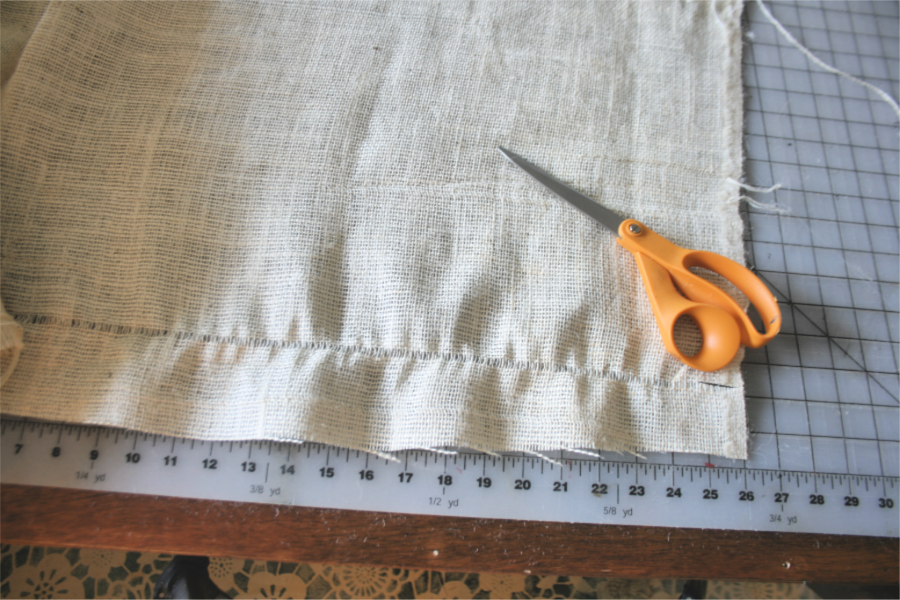 This will leave you with a missing weft thread and a clear line to follow while cutting. This method guarantees you’ll cut your fabric “on grain”.
This will leave you with a missing weft thread and a clear line to follow while cutting. This method guarantees you’ll cut your fabric “on grain”. 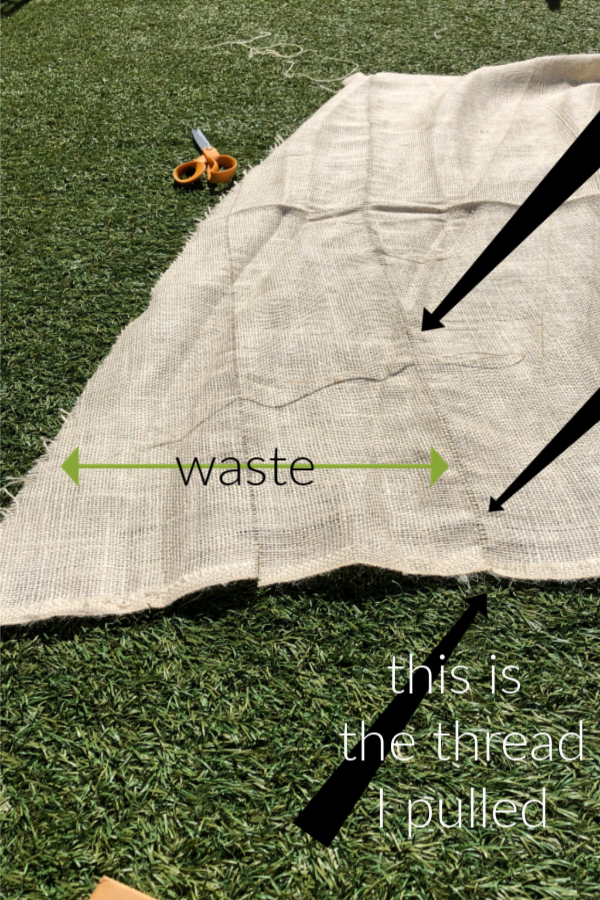 I had an odd job this past weekend where I had to cut burlap in 10′ lengths to wrap trusses. The picture above is how the burlap came off the bolt from the fabric store. Had I not pulled a thread I would have cut this waaaaaay off grain.
I had an odd job this past weekend where I had to cut burlap in 10′ lengths to wrap trusses. The picture above is how the burlap came off the bolt from the fabric store. Had I not pulled a thread I would have cut this waaaaaay off grain.
You can see the first thread I pulled on left was not nearly far enough. But to my eye it looked like it would’ve been a straight, square cut. You can see clearly by the thread pulled on the right how far off square the fabric was cut by the store. Ugh! So make sure to get an additional 1/4 yard to account for the off cut at the store.
Pulling a thread is the most accurate and dependable way I’ve found to cut fabric straight, square and on grain.
Let me know if this helps…I have a video explaining this process. Check it out…there’s a funny story relating to this topic at the end.

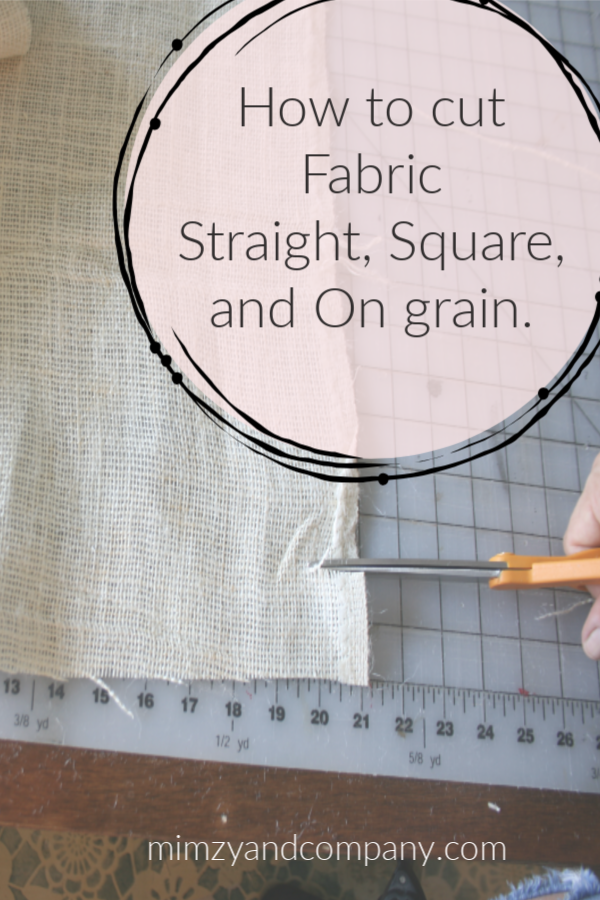

 miriam fs says
miriam fs says
January 2, 2020 at 1:31 amI have some cut burlap pieces that i want to repurpose and make christmas stockings with, but the selvage edges were cut off long ago. Does it matter which way I cut or sew as long as I pull a string on grain? I don’t know which side is the weft or which is the warp.
 mimzylombardo@gmail.com says
mimzylombardo@gmail.com says
January 16, 2020 at 4:14 pmno, it doesn’t matter which way you cut it as long as you follow the string pulling method.
 Barb Rozzell says
Barb Rozzell says
October 13, 2019 at 7:53 pmI tried this method last night on both ends of my fabric. When the fabric was cut along the line where it was pulled it did not match up. When I folded the selvages together, the length was off by at least an inch on one side. What am I doing wrong. Anything you can tell me will help. Thanks Barbara